MSI Claw review: Shamefully declawed
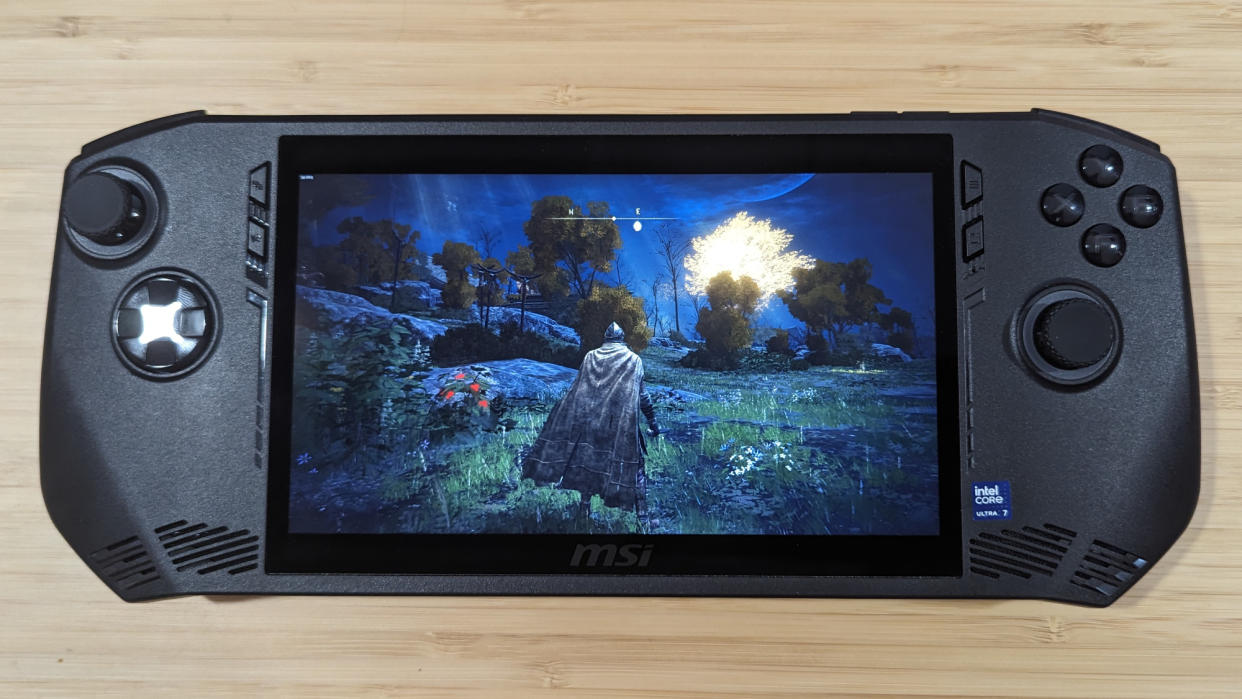
I got my first hands-on experience with the MSI Claw at CES 2024, and while I noted issues during my testing, I hoped these would be solved by its retail launch. As someone who has been obsessed with Windows gaming handhelds ever since the Asus ROG Ally, I’ve been looking forward to spending time with the Claw since it was revealed late last year.
But the Claw has launched blunter than expected, yielding a treasure trove of issues that take it several notches below competitors. I hoped that MSI could knock the crown off the head of the best handheld gaming devices, but it has done nothing but disappoint.
MSI Claw: Specs
MSI Claw: Pricing and configuration
The MSI Claw’s price point sits in an odd spot, as it’s currently the most expensive of the Windows gaming handheld devices. Configurations for the ROG Ally start at $599 and end at $699 (often available for $100-$200 less on sale), while the Lenovo Legion Go starts at $699 and ends at $749. Our review model of the Claw is the priciest at $799 for an Intel Core Ultra 7 155H with 1TB of SSD storage and is available on MSI’s website.
The Claw shares the same starting point as Lenovo at $699 for its Intel Core Ultra 5 125U processor with 512GB of SSD storage. Taking up the middle-ground is a $749 model with the same Ultra 7 processor but 512GB of storage.
Steeper cost isn't a dealbreaker, but it did mean that the Claw needed to do extra legwork to convince us that it’s worth the price. Its competitors are more affordable, so the fact that it misses the mark is disappointing. Beyond processor and storage, the MSI Claw comes with 16GB of RAM, a 7-inch, 1920 x 1080-pixel resolution IPS display with a refresh rate of 120Hz, and Windows 11 Home.
MSI Claw: Design
The MSI Claw’s name comes from its ergonomics, and while that’s a facet most handheld tech should consider, it’s especially important for gaming. If you're going to hold a device for hours at a time, it better be comfortable. That's where one of the Claw’s most exciting features comes to life, as it’s built with two controller-like grips at the back.
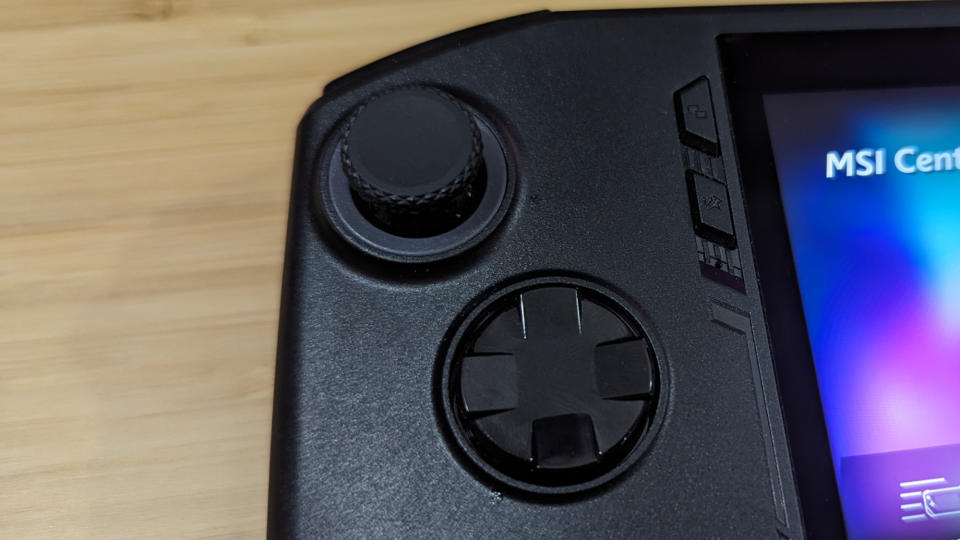
My hold of the device was firm and the subtle contours on each side allowed my fingers to support the system. The Ally would numb my arms after hours of use and I sometimes found myself supporting its bottom with my pinkies, although it does benefit from being lighter. While both have controller grips, the Claw’s are more pronounced and I can hold onto them without the need for extra support.
Elsewhere, the Claw’s design greatly resembles that of the ROG Ally, with the face buttons, D-Pad, and joy sticks taking the same layout as a traditional Xbox gamepad. Differences include its black finish and back triggers with Hall Effect sensors, meaning no physical contact is required for input to go through. However, the design of the Claw makes it nearly impossible to see its buttons in the dark, as the buttons and engravings are dark.
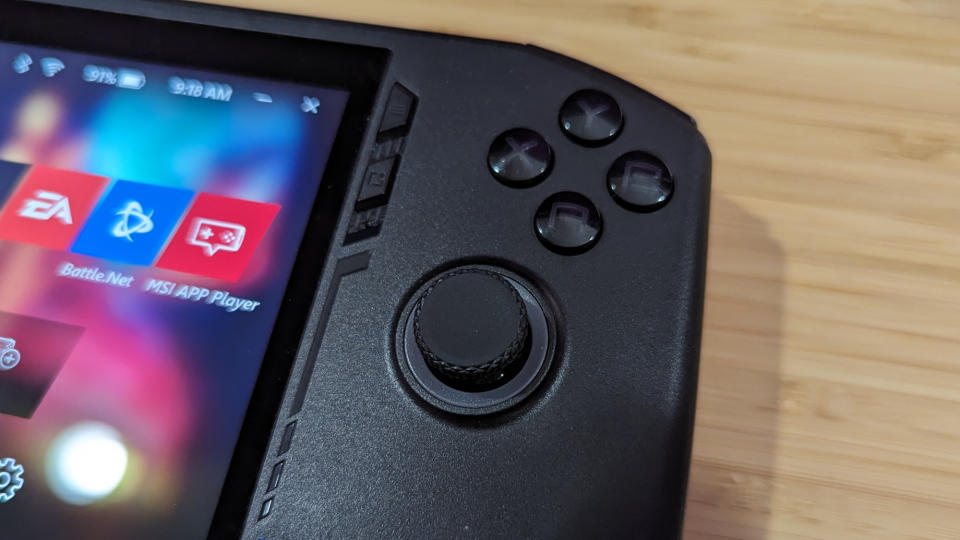
Its two Macro Key buttons, which sit at the back and can record keys, are nudged too closely against each grip. I kept clicking them by accident while playing Elden Ring. Although the Claw’s curved bumpers are novel, I prefer a traditional straight bumper design—it doesn't help that they have a noticeable squishiness rather than a satisfying click. And its clickable portion does not fully extend through the bumpers, meaning it cannot be pressed down at the edge closest to the center of the device. This is a huge criticism I had of Xbox One controllers, and it’s why I avoided using them.
The MSI Claw sits in the middle compared to other handheld gaming devices in weight and size, coming in at 11.6 x 4.6 x 0.85 inches and 1.48 pounds. The Asus ROG Ally (11.02 x 4.37 x 0.83-1.28 inches, 1.34 pounds) is lighter and smaller, but the Lenovo Legion Go (11.8 x 5.15 x 1.61 inches, 1.9 pounds) is the largest and heaviest by a significant margin.
MSI Claw: Ports
The Claw has a mostly expected selection of ports for a gaming handheld, featuring a microSD, 3.5mm audio jack, and a power button with a fingerprint sensor, but it surprises us with Thunderbolt 4 implementation.
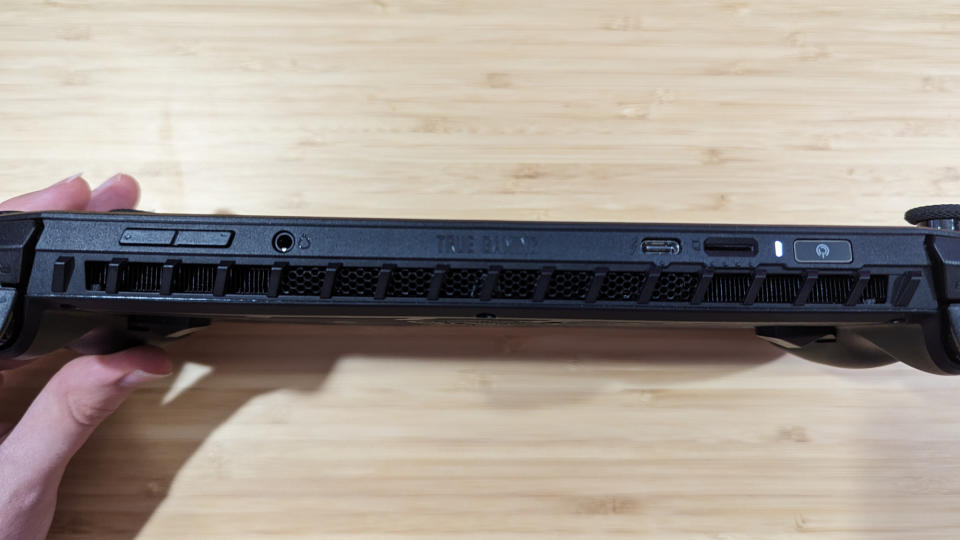
The Ally is similar except it has a USB-C 3.2 Gen2 port, while the Legion Go has two USB-C 4.0 ports, but neither device has Thunderbolt 4. What's especially impressive about the Claw is that it comes with Wi-Fi 7, which makes it one-of-a-kind when it comes to gaming handhelds.
MSI Claw: Display
The Claw is built with a 1920 x 1080-pixel resolution, IPS touchscreen with a 120Hz refresh rate panel. This is pretty standard for a gaming handheld, so we can at least be glad that it’s not trapped to a 720p display.
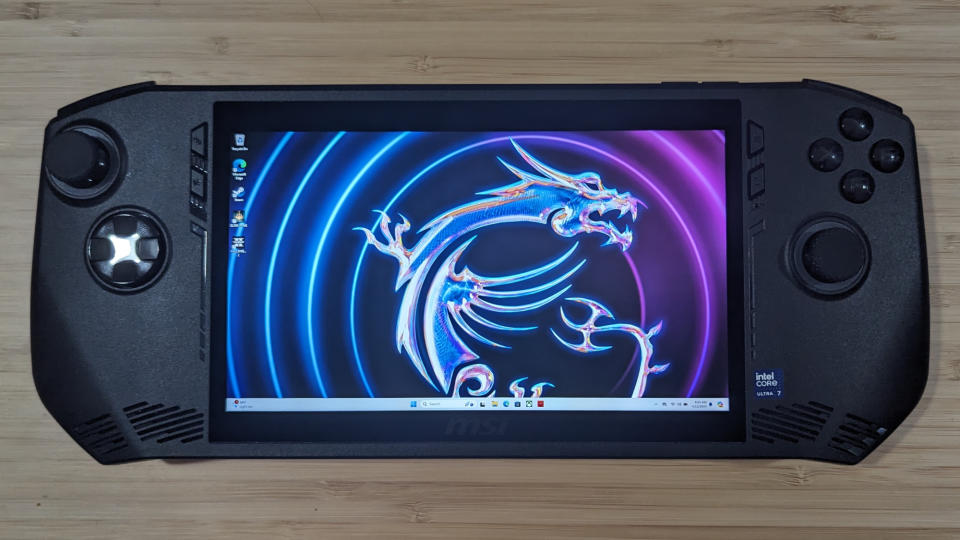
I launched Elden Ring and traversed Volcano Manor, engulfed in its stunning blend of gothic architecture submerged into pools of roaring lava. The display did a good job presenting the bright oranges of this area in contrast to the everpresent red hue, but don’t expect an overly colorful machine here. Especially in contrast to my experience testing this game on OLED displays, it sincerely makes me hope a Windows handheld gaming device incorporates an OLED panel in a future model. At the very least, the screen got bright enough to accommodate playing in a harshly lit room.
The Claw performed below average on our color tests, reproducing 72.5% of the DCI-P3 color gamut. To no surprise, it's less colorful than the mainstream gaming average of 90%. It’s also worse than the ROG Ally (76.9%), while the Legion Go (107.5%) absolutely crushed it in vividness.
It did better on our brightness tests, hitting a peak of 429 nits on average, which is superior to the 379-nit mainstream gaming average. Even though it did well, this still puts it below the Asus ROG Ally (465 nits) and Legion Go (476 nits).
MSI Claw: Audio
Quality audio in a handheld device is important, as a poor speaker system can easily ruin a gaming experience and force the player to keep a pair of headphones around. That’d be far too inconvenient for my tastes, but I can confirm that the Claw’s speaker system sounds solid enough for mobile gaming. This is one thing the device absolutely does better than the ROG Ally. The Claw’s speakers are far louder and more intense.
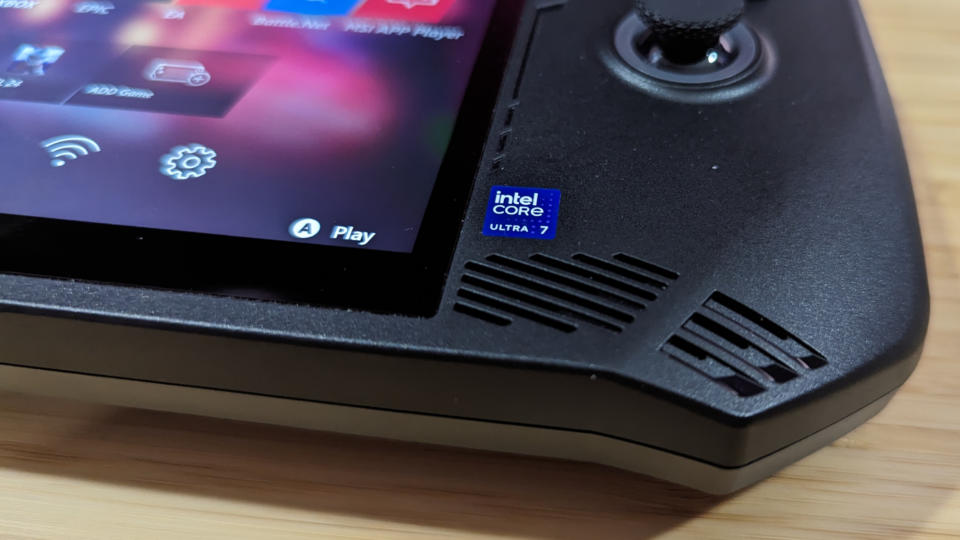
I played Elden Ring and was impressed by how the menu music reverberated through my fingers, giving me chills as I launched into it and explored the snake-infested halls of Volcano Manor. The general hum of its bubbling pools of lava surrounding the tall castle walls sounded crisp and satisfying, while the uncomfortable droning of its atmospheric soundtrack sent shivers down my spine.
MSI Claw: Gaming and graphics
The MSI Claw is unique in the realm of Windows gaming handhelds. Unlike the Ally and Legion Go, it's built with an Intel processor rather than AMD. It sports the latest Meteor Lake CPUs, with the base model offering an Intel Core Ultra 5 125U CPU and the higher-end model packing an Intel Ultra 7 155H. Beyond that, it's outfitted with 16GB of RAM and either 512GB or 1TB of SSD storage.
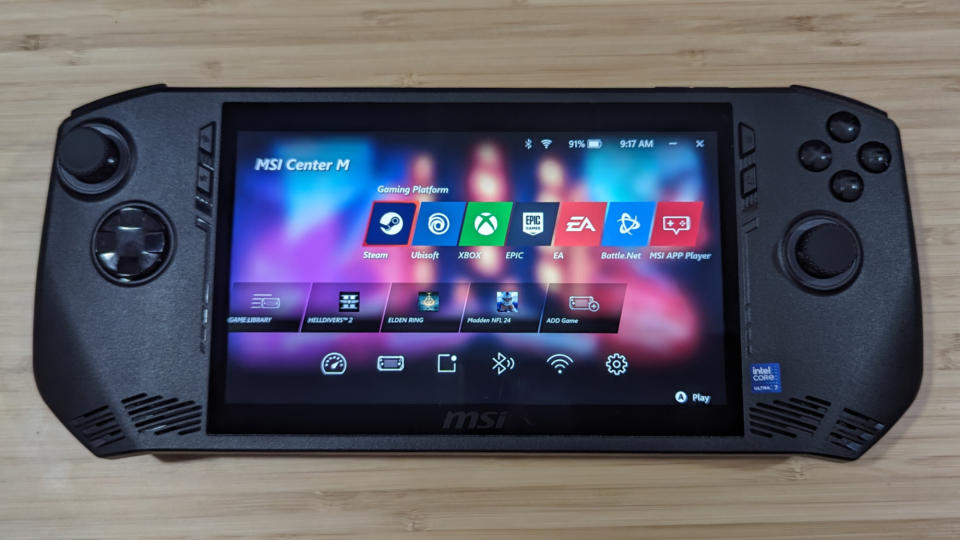
I ran around Elden Ring with the graphics set to high and it was too choppy to enjoy, so I swapped everything to low at 1080p. This kept things at around 32 frames per second, but there were frequent stutters and freezes, alongside slowdowns dropping it down to 20 fps. Unplugging the Claw made the framerate drop further, averaging 20 to 25 fps with more frequent slowdowns. This may sound fine for a lightweight gaming PC, but when playing Elden Ring on the ROG Ally (AMD Ryzen Z1 Extreme) at 1080p with graphic settings on high, it maintained 50 to 60 fps.
I also tried running Helldivers 2, but it wasn’t stable enough to enter the graphics settings and make changes, beyond the issues I had with game controls. Trying to move the camera made the game freeze, and when it was in motion it dropped below 10 fps.
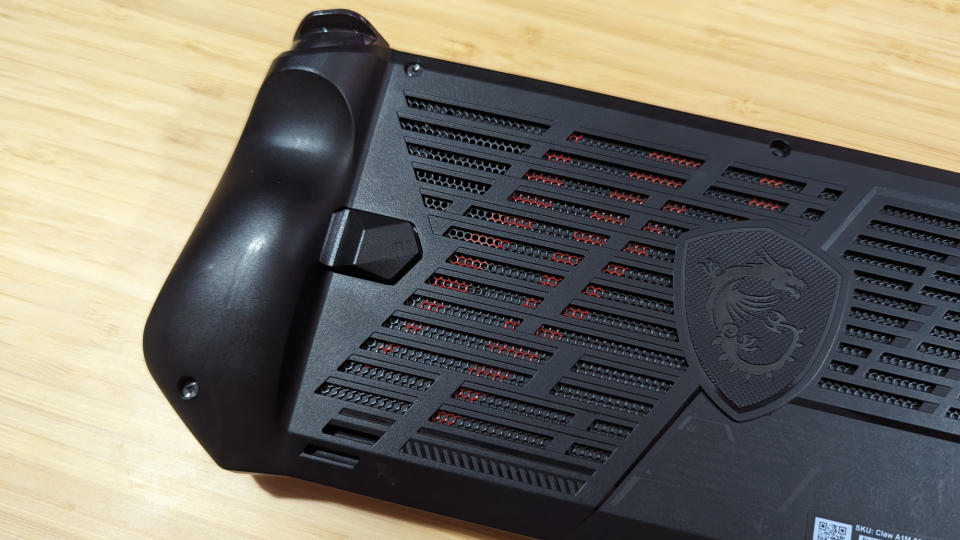
Thanks to the power of Intel’s latest processors, the Claw will utilize Intel XeSS to boost framerates in select games through AI upscaling. This catalog features over 50 titles, including Forza Horizon 5, Dying Light 2, Call of Duty Warzone, Hi-Fi Rush, Death Stranding, Returnal, Ghostwire: Tokyo and more.
We put the Claw through several gaming tests, but we had a bit of trouble. It wasn’t capable of running our typical titles of choice at their highest graphics setting. However, we were able to get it to run Borderlands 3.
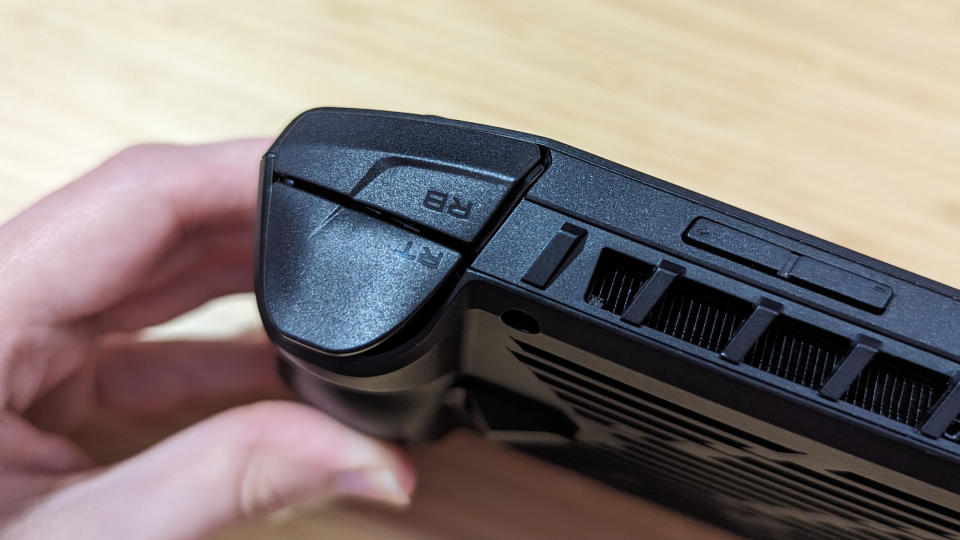
During the Borderlands 3 test on Badass graphics settings at 1080p, the Claw managed an average of 23 frames per second. This matched the Asus ROG Ally (23 fps), which is shocking considering the Ally was capable of running a majority of other games far better.
Otherwise, these tests stand alone and can’t be compared to other devices due to different graphic settings. Assassin’s Creed Mirage at 720p achieved 49 fps on medium graphic settings, while Far Cry 6 on Ultra at 1080p yielded 29 fps. However, Cyberpunk 2077 with Ray Tracing on Medium at 1080p managed a solid 30 fps.
MSI Claw: Performance
The Claw is built with an Intel Core Ultra 7 155H processor, 1TB of SSD storage and 16GB of RAM. On paper, this should yield absolutely spectacular performance metrics when compared with AMD competitors, but the real answer might surprise you.
On the Geekbench 6.2 overall performance test, the Claw’s multi-core score of 10,209 is a good bit beyond the mainstream gaming laptop average of 8,383. However, the Asus ROG Ally’s AMD Ryzen Z1 Extreme CPU (11,041) put it ahead, while the Legion Go’s AMD Ryzen Z1 Extreme CPU (9,627) was left behind.
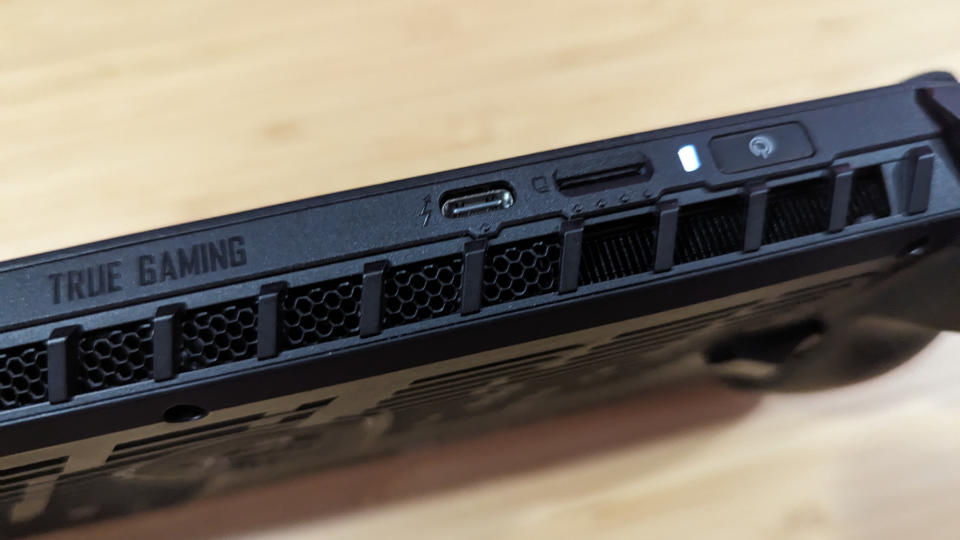
When converting a 4K video into 1080p using the HandBrake app, the Claw accomplished the task in 6 minutes and 22 seconds, which is slower than the 4:35 category average. The Asus ROG Ally (4:56) is thrust into first place again, while the Legion Go (9:24) is by far the slowest.
The Claw duplicated 25GB of multimedia files in 29 seconds at a transfer rate of 920 megabytes per second, which is lower than the 1,481MBps category average. The Asus ROG Ally (512GB SSD, 769MBps) is at the bottom of the barrel, but the Legion Go (1TB SSD, 1,432MBps) claimed the top spot and got closest to the average.
MSI Claw: Software
Any good gaming handheld needs excellent software to support it. Windows is frustrating on a gamepad, and a dedicated app to tidy up your game library is a necessity. The Claw’s solution to this problem comes in the form of MSI Center M, an application that updates with installed games, features shortcuts to game launchers, and offers extensive settings for the Claw.
MSI Center M thrives with the inclusion of a game bar that automatically adds vital launchers, including Steam, Xbox App, Epic Games, Ubisoft Connect, Battle.net, and EA Play. This provides easy access to certain applications, potentially minimizing how much you’d need to use Windows 11.
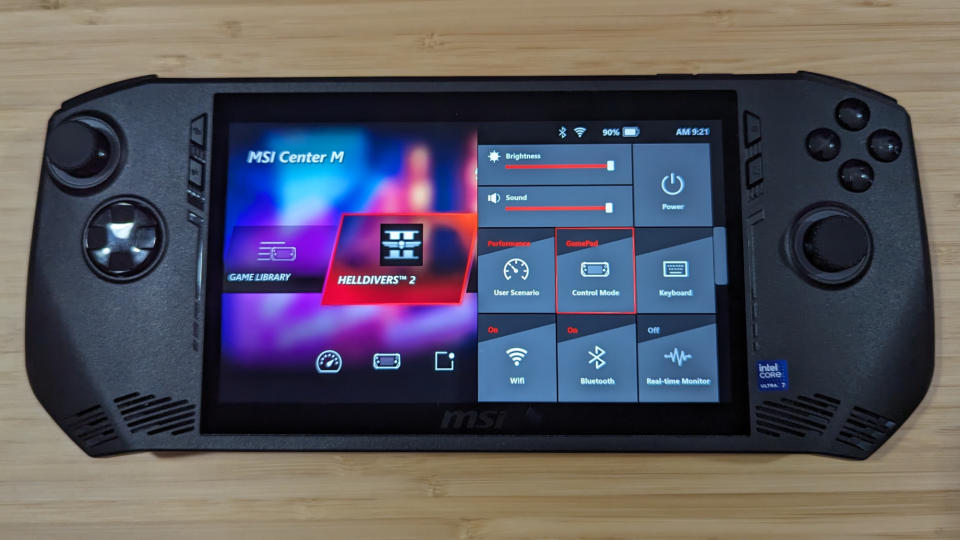
The Claw also features a Quick Settings button that accesses necessary settings like performance and control modes. However, unlike the ROG Ally—which features a smart Auto option that detects which is needed when—the only two options available are GamePad and Desktop. Otherwise, MSI Center M is customizable, offering useful shortcuts like showing a digital keyboard or returning to the desktop.
MSI Center M has its fair share of bugs, though. When I launched Helldivers 2, I was unable to proceed through the menus until I realized I was still on Desktop mode. I pressed the Quick Settings button to access it, but whenever I clicked on the option to swap from desktop to gamepad, it exited me out of the tab. I had to click on it with my fingers to get it to swap modes. When I finally went into the game with gamepad mode, I tried modifying other settings in the Quick Settings menu, but a shadow cursor was hovering over the Performance setting. Every time I selected the setting I wanted, it would instead click into where that phantom cursor haunted the screen.
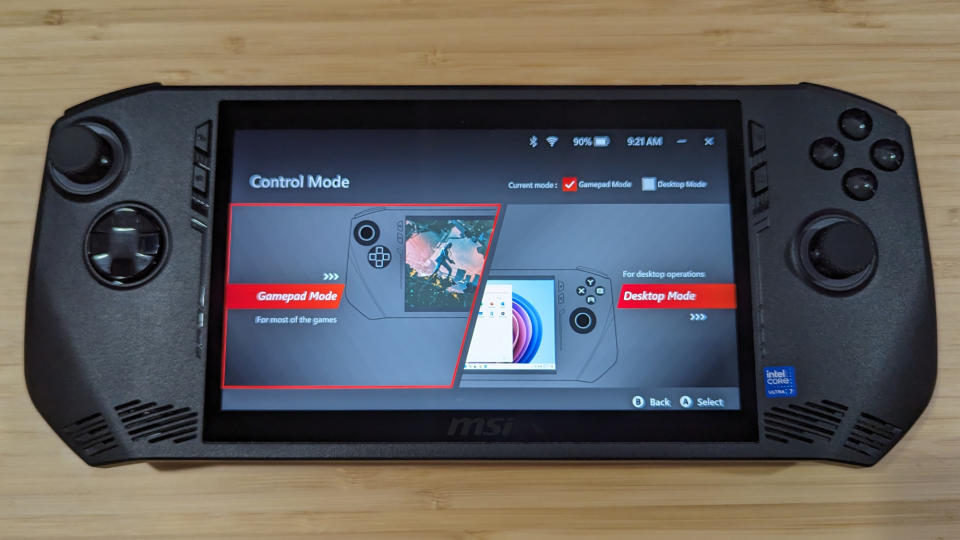
In order for desktop operations to work properly, you need to go to the MSI Center M, select Control Mode at the bottom, open Desktop Mode, and swap from Macro Keys to Combination keys. Otherwise, you won’t be able to use vital shortcuts like lifting the keyboard to type into a field, taking screenshots, or quickly returning to the desktop.
Because the default shortcuts for returning to desktop and performing other useful tasks are disabled out of the box (as it prioritizes its potential Macros), you can easily find yourself trapped when nothing is working properly. I just haphazardly swiped up on the bottom of the screen until I was able to leave the game when it froze on me.
Beyond that, the Claw features a media gallery for saving photos and videos, Macro Key recording, AI-powered battery saving, and MSI App Player for easy access to Android applications.
MSI Claw: Battery life
With a 53Whr battery, MSI claims that the Claw will last two hours while gaming at maximum load. It's certainly at an advantage when compared to the Ally and Legion Go since the former has a 40Whr battery while the latter has a 49.2Whr battery, making the Claw the strongest of the group on paper.
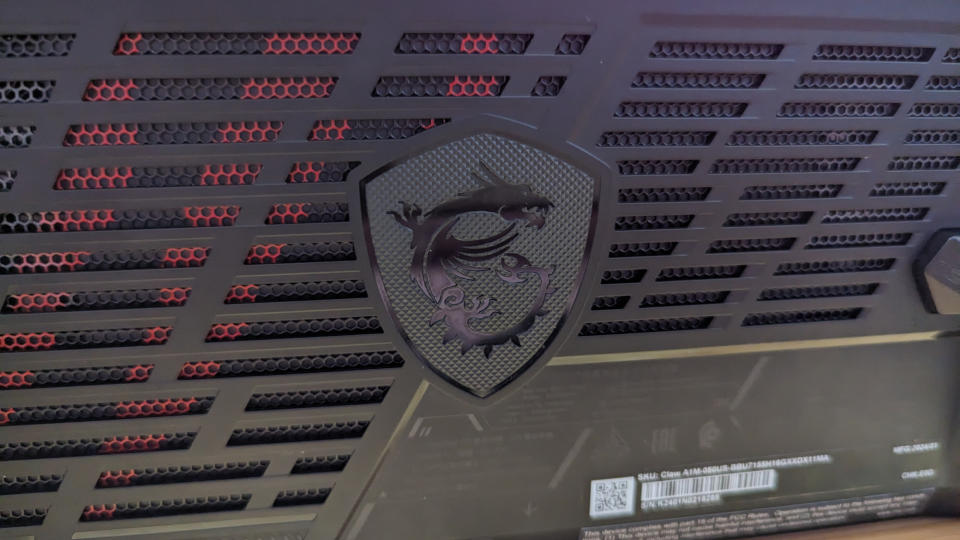
However, battery life isn't that simple. The Intel Meteor Lake processor series is a whole different beast when compared to the Ally and Legion Go’s AMD Ryzen Z1 Extreme. Considering the industry is abuzz about the power efficiency of Intel’s latest chipsets, does MSI actually deliver?
On the Laptop Mag battery test, which involves continuous web browsing over Wi-Fi at 150 nits, the Claw lasted 6 hours and 8 minutes. This does beat the category average of 5 hours and 38 minutes. It also surpassed the Asus ROG Ally (5:51) and Legion Go (4:06).
However, what really matters is how long these devices can last while gaming, and with MSI’s two-hour promise, the Claw dies first at 1 hour and 22 minutes. The ROG Ally (1:43) and Legion Go (1:59) lasted a little longer, closer to the two-hour mark.
MSI Claw: Accessories
The only Claw peripheral currently available is the Nest Docking Station, which costs $79, but it seems to be out of stock. We haven’t been able to test the proper model, but we went hands-on with a prototype at CES 2024. By clicking its front panel and sliding it out, you can place the handheld device in the dock and enable access to additional ports. The prototype model we saw featured an HDMI port, three USB-C ports, two USB-A ports and an Ethernet port.
MSI Claw: Heat
Since the Claw isn’t a traditional laptop, we measured its heat a bit differently. After streaming a 15-minute video, its directional D-Pad on the left hit 88.5 degrees Fahrenheit, while the underside measured 86 degrees. The hottest point was 93 degrees at the top edge center. Things got a little more intense after gaming for only 15 minutes. The directional D-Pad (87 degrees) stayed relatively cool, but the underside (98 degrees) and the top edge center (104 degrees) were a bit toasty.

Heat on paper doesn’t matter as much as how it feels in your hands, and I can confirm that the Claw does not feel great to hold. If you keep your fingers at the grips and don’t travel much beyond them, you’ll feel only a slight but present heat, but if you rest your fingers against the back plate it’ll get too hot for comfort.
I’ve played on my ROG Ally for hundreds of hours and never had issues with heat discomfort, but this issue was immediately prominent on the Claw. The obvious problem is that vents exist on the lower section of the backplate, meaning your fingers will feel the heat in a resting position. It even makes the grips a bit steamy.
Bottom line
The Claw is a nightmare. Even if you can forgive its software issues, design flaws, and uncomfortable levels of heat, it boasts the highest price point of the Windows gaming handheld devices ($799), yet delivers the worst performance by far.
I couldn’t believe my eyes when running Elden Ring—the game delivered nearly half the framerate on a significantly lower graphical settings when compared to the cheaper Ally. That should be all you need to know. The Claw is a shocking misstep for MSI, and we’d recommend checking out the Asus ROG Ally or Lenovo Legion Go for worthwhile alternatives.

